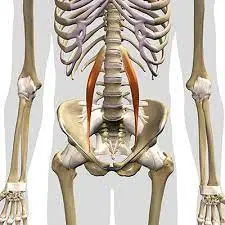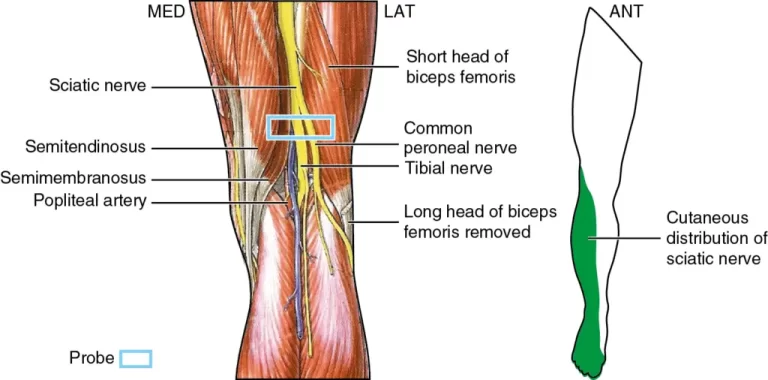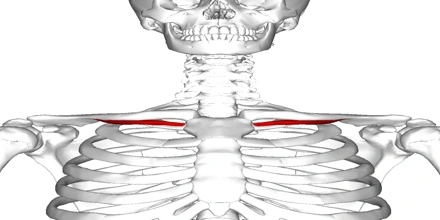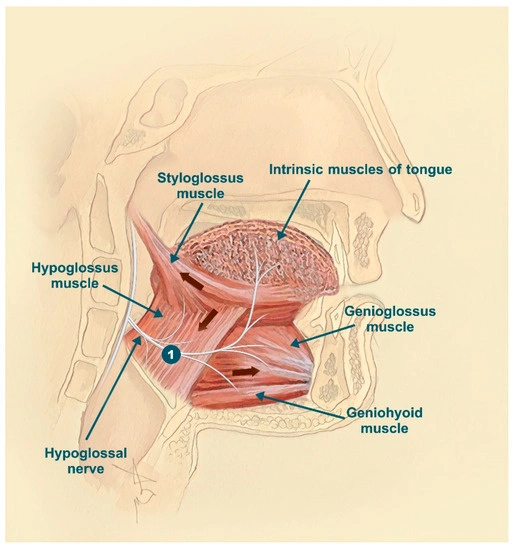Psoas minor muscle
What is Psoas minor muscle?
The psoas minor muscle is a small muscle located in the hip region of the body. The psoas minor muscle originates from the vertebrae T12 and L1 and inserts into the iliopectineal eminence of the pelvis. It is responsible for flexing and rotating the hip joint.
It is on the psoas major muscle’s anterior aspect but does not extend beyond the inguinal ligament. The psoas minor muscle is not considered a part of the iliopsoas muscle complex despite its close relationship to the psoas major muscle.
The psoas minor is a variable muscle that is only present in a small percentage of people. At the point when present, it follows up on the lumbar spine to create a weak flexion of the trunk.
Origin of Psoas minor muscle
The lateral aspect of the 12th thoracic and 1st lumbar vertebrae’s body
Insertion
Pubic line at the pectineus
Relations
The most distal end of the ileum crosses the right psoas minor, which is located posterior to the inferior vena cava, while the colon crosses the left psoas minor. This is because the psoas minor muscle is completely on the front surface of the psoas major muscle.
Along its anteromedial line, the Psoas minor muscle is connected with the sympathetic trunk and the aortic lymph nodes.
Innervation
The psoas minor muscle is innervated by the front ramus of the spinal nerve L1.
Blood supply
The lumbar arteries provide the majority of the psoas minor muscle’s vascular supply. However, the psoas major muscle’s blood supply network also makes a small contribution. The iliolumbar, obturator, external iliac, and femoral arteries, among others, may be involved in this.
Function of Psoas minor muscle
The psoas minor muscle’s main function is to assist the larger psoas major muscle in flexing and rotating the hip joint. When these two muscles work together, they play an important role in maintaining the stability and alignment of the pelvis and lower back during movement.
In addition to its role in hip flexion and rotation, the psoas minor muscle may also contribute to the stabilization of the lumbar spine. It may help to prevent excessive forward bending of the spine during certain movements, such as lifting or carrying heavy objects.
However, it’s worth noting that the psoas minor muscle is not present or well-developed in everyone, and even in those who do have it, it is considered to be relatively unimportant compared to the larger and more functional psoas major muscle.
Psoas Minor Stretching
A tight Psoas Minor muscle can be lengthened with the help of the stretches below.
Supine Knee to Chest
Rests on your back with your legs broadened. Bring one knee up towards your stomach and utilize your hands to hold the leg set up while keeping the other leg reached out on the floor. To extend the Psoas Minor, stand firmly on this footing for thirty seconds before switching legs.

Thomas Stretch
The use of a table will be required for this Psoas Minor stretch. Rests on your back on the table with the goal that your legs are hanging off. Bring one knee up to your chest and hold it set up, while the other leg is as yet hanging off of the table. You will feel the stretch where the hanging leg’s hip flexors are engaged by this stretch. After staying in this position for thirty seconds, switch your legs.
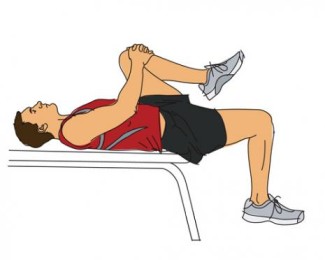
Frankenstein Walk
The Frankenstein Walk is a great way to incorporate a dynamic warm-up that stretches the Psoas Minor into your exercise routine.
Psoas Minor Strengthening Exercises
The Psoas Minor will be strengthened by these exercises. A large portion of these activities will likewise challenge your core stability, which can assist with further developing equilibrium.
Straight Leg Raise
Rests on your back with your legs broadened. Start to raise the two legs simultaneously up high. Try not to bend your knees and aim for a hip angle of 90 degrees. Return the legs to the beginning position and recount the notion for 3 arrangements of 12 reps.

Standing Hip Flexion
This exercise can be challenging and requires good balance! If you require assistance, make sure you have someone to turn to. A resistance band can be wrapped around a stable object on one end and your ankle on the other. Stand tall with your feet hip-width separated. Move the knee toward the sky with a 90-degree angle at the knee so that the thigh is parallel to the floor. Return the leg to the beginning position and recount the motion for 3 arrangements of 12 reps.

Hanging Leg Raises
Hanging leg raises are a great exercise for strengthening the Psoas Major and Minor as well as the core. Put two hands on the bar and hang on close. Your legs will be hanging below you and your arms will be fully extended. Lift your legs to hip height while strengthening your core. Throughout the entire movement, you should aim to keep your legs straight. Gradually further the legs back down in a controlled style and recount this motion for 3 arrangements of 12 reps.
If the Hanging Straight Leg Raise is excessively trying for you, you can play out the leg raise with twisted knees to make the activity simpler.
Clinical Significance:
Psoas minor muscle pain
Pain in the psoas minor muscle is relatively rare because it is a small muscle and not a primary mover in the hip joint. However, when it does occur, it is typically due to overuse or strain of the muscle.
Symptoms of psoas minor muscle pain may include:
- Pain or discomfort in the front of the hip or groin area
- Stiffness or tightness in the hip joint
- Stiffness in the hip joint
- Pain when flexing or rotating the hip joint
- Pain that worsens with prolonged sitting or standing
- Treatment for psoas minor muscle pain typically involves rest, stretching, and gentle exercises to improve hip flexibility and mobility. Massage or other manual therapies may also be helpful in relieving muscle tension and promoting relaxation.
In some cases, underlying conditions such as hip joint problems or lumbar spine issues may be contributing to psoas minor muscle pain. In these cases, it is important to address the underlying condition in order to fully resolve the pain.
FAQ
Do certain individuals not have a psoas minor?
Variation. Only about 40% of the human specimens studied contained the psoas minor muscle, which is regarded as inconstant and frequently absent. It has approximately 7.1 cm of muscle and 17 cm of tendon, and its average length is 24 cm.
What happens when the psoas is powerless?
The psoas is such a neglected muscle that it can cause a lot of problems. Since it appends to the spine and the femur, when this muscle is powerless or tight and short, it makes the spine round. Lower back pain is frequently brought on by this. Poor posture and pelvic pain can also be brought on by weak, tight psoas.
How would you treat psoas minor?
Exercise is the most effective treatment for Psoas syndrome. These are frequently performed at home and demonstrated by a doctor or physical therapist in the outpatient office. These activities will incorporate the dynamic and static spine, hip joints, and psoas muscles control and extension.
How prevalent are psoas minors?
The Psoas Minor is a short, paired muscle in front of the Psoas Major that is in the posterior abdominopelvic region. The first lumbar vertebra and the last thoracic vertebra are the sources of the psoas minor muscle. It affects between 60% and 65% of people.
What is the job of a psoas minor?
The psoas minor muscle (PMM) starts as up fascicles implanted in the gatherings of the last thoracic and first lumbar vertebrae and implanted into the iliopectineal differentiation. The muscle only allows for a small amount of flexion of the lumbar spine.

